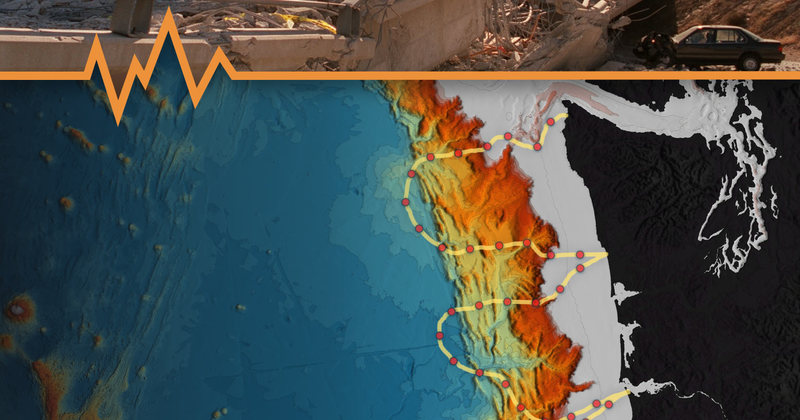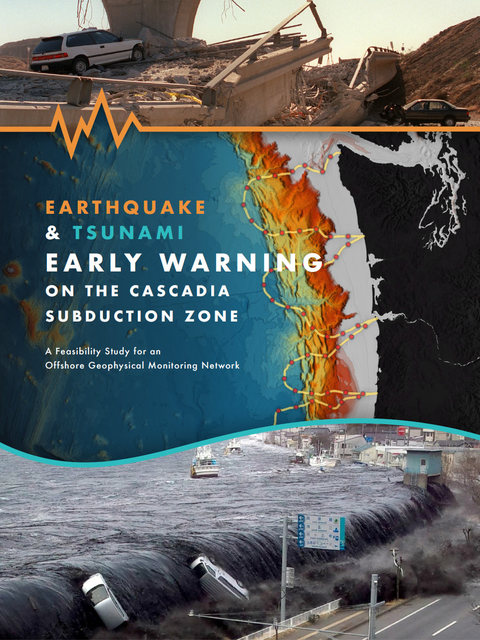The timeliness, accuracy, and reliability of earthquake and tsunami early warning in subduction zones, such as found in the Pacific Northwest, would be enhanced by offshore geophysical instrumentation. However, offshore instrument networks are technically challenging to design, install, and maintain.
The feasibility and design of an offshore geophysical network for earthquake and tsunami early warning in the Pacific Northwest was evaluated by a team of scientists and engineers at the University of Washington with support from the Gordon and Betty Moore Foundation. The team’s goals were to (1) consider the justification for such a system, (2) identify the high-level system specifications, (3) evaluate current and emerging technologies, (4) determine the feasibility and approximate costs of illustrative designs, and (5) make recommendations about the path forward.
The instrument network designs presented here are neither final nor optimized, but rather are illustrative of options that utilize established and emergent approaches. While the report notes the necessity of incorporating an offshore geophysical network into a comprehensive strategy for preparedness, education, warning, and response, it does not present a holistic mitigation plan, nor does it explore in any detail how offshore data would be integrated with existing warning systems that are operated by the United States Geological Survey (USGS) and the National Oceanographic and Atmospheric Administration (NOAA). This report is best viewed as a resource on the scientific and technical considerations, as well as the societal benefit, for earthquake and tsunami detection in subduction zones, such as in Cascadia and similar locations across the planet with populations at risk.
Download the full white paper using the link below:
- White Paper (8 MB Low Resolution Version)
- White Paper (45 MB High Resolution Version)
The White Paper will appear as a 2-page layout when opened in Acrobat.
Citation: Schmidt, D., W. Wilcock, R. LeVeque, F. Gonzales, G. Cram, D. Manalang, M. Harrington, E. Roland, and P. Bodin. Earthquake and Tsunami Early Warning on the Cascadia Subduction Zone: A Feasibility Study for an Offshore Geophysical Monitoring Network. Seattle: University of Washington, 2019, 81 pp. http://hdl.handle.net/1773/50968
Supplementary Documents
- Engineering Trade Study – summarizes the seafloor technologies for detecting earthquakes and tsunamis (1.5 MB).
- Desktop Survey – a report that uses a hypothetical cable layout to assess risks and technical requirements (28 MB).



